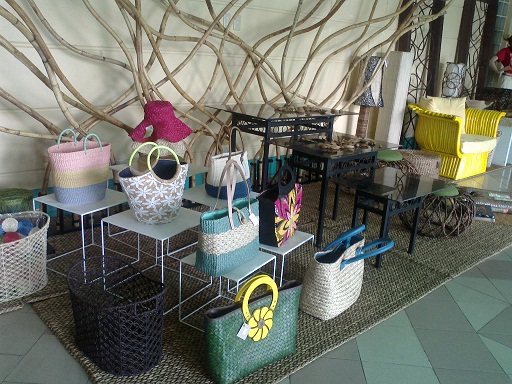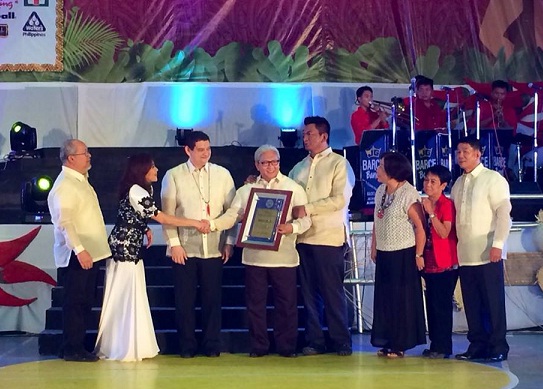TEXT AND PHOTOS BY REYNARD MAGTOTO
“WITHOUT this, maybe it will be too hard for me to provide food for my family since I don’t have any better job,” Delma Loveres said as she took the two pinurons alternately inserted in the threads in the wooden handloom to demonstrate how to weave an exquisite placemat.
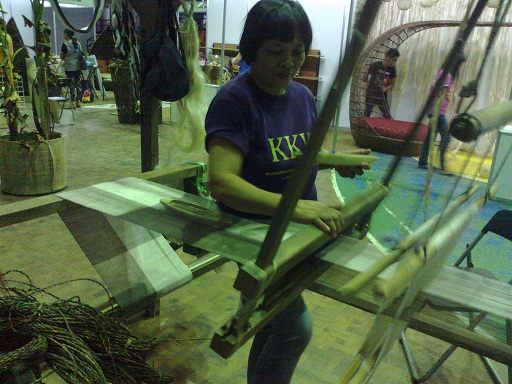
She first collected the strands of abaca fiber using the spinning wheel. With the two separately collected strands of abaca fibers called pinurons, she proceeds to the handloom.
“Step on the left break, insert the first pinuron to the left side of the thread then pounding is done,” Loveres explained to a group of foreigners at the recently-concluded Green Products and Techno Showcase of Albay’s Pride. “Step on the right break, insert the second pinuron to the right side of the thread then pounding is done”.
The 59-year-old weaver regularly supplies raw materials to Natural Carpet Industries (NCI),
one of the craft companies in Albay that provide livelihood to villagers.
Formerly known as Napa’s Handicraft, NCI had a very modest start, able only to pay its workers per piece of any hand-woven product they created. “I was in a financially unstable state,” Felipe Noe Morin Napa Jr. described his company’s beginnings, adding that almost all of the family’s properties were mortgaged.
But it survived tough competition from other handicraft producers here and abroad. Now the company boasts of a 7, 300 square-meter production area and has a complement of 120 skilled and experienced weavers and craftsmen who create products largely to fill the demand of the export market, particularly Australia, Canada, Middle East, Europe and China.
NCI is now also debt-free.
“Truly, the local handicraft companies are committed to help the abaca industry in the province in creating world-class products and providing employment opportunities for Albayanos,” Dorothy Colle, Albay tourism officer said.
These entrepreneurs also understand the needs of the clients and the market. “These companies continue to produce diverse and unique products that have undergone meticulous research and conceptualization in order to ensure each product’s functionality and intricate designs,” she added.
“They also involve themselves in government programs aimed to improve the excellent and world-class abaca production”.
Abaca and abaca-based products have been a consistent dollar earner for the Philippines, one of only two abaca producers in the world. The other country is Ecuador.
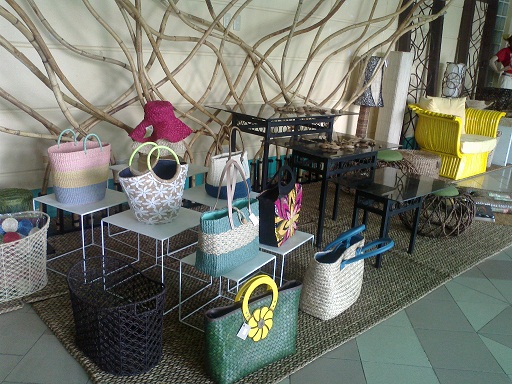
The Philippines’ biggest markets for abaca fiber are the United Kingdom, China, Indonesia, Japan and Thailand, accounting for a total 11,700 bales, according to Melanie Balaquer, fiber development officer from the Fiber Industry Development Authority.
About 1.5 million Filipinos directly or indirectly depend on the abaca industry for a living, FIDA says.
The abaca industry had suffered setbacks in the past several years. Domestic production took a dive after a series of devastating typhoons hit the Bicol region in 2006 and 2007, but output subsequently improved. By 2009, Bicol had outranked Eastern Visayas as the biggest producer, with 23, 752 metric tons of abaca fiber as against the latter’s 9,289 metric-ton production.
With total land area of 33, 051 hectares planted to abaca, Catanduanes remains the biggest abaca producer in the region, according to Albay Governor Joey Salceda.
But he says Albay is one of the biggest producers of high-end abaca products, adding that the province has a pool of entrepreneurs and artists adept in creating innovative styles and designs that are in sync with global trends.
FIDA also launched a program aimed at expanding the hectarage planted to abaca to ensure steady production.
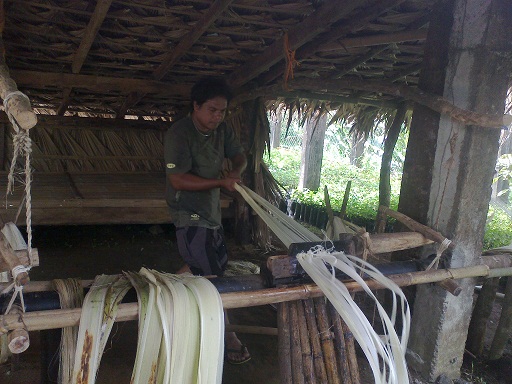
El Ranchito Diversified Farm owned by the Brizuela family now produces 12, 000 suckers (shoots) of abaca in its six-hectare property in Malinao, Albay. The hectarage is part of the total land area of 5, 992.79 hectares converted into abaca plantation sites in the province under the FIDA program.
FIDA also distributed twining and handloom devices in the region and conducted training programs for its beneficiaries.
The intensified efforts have helped the industry get back on its feet and regain its fame. Meanwhile, domestic handicraft producers are adding more glitter to abaca products with their innovations.
Alemania Weaving Center in Malilipot, Albay is the only weaving center in the region that provides pinukpok cloth. It is a fine, smooth and silky fabric, three times stronger than cotton and silk, which is produced from the manual pounding of abaca fibers.
Its operation started in 1979 through the efforts of the Department of Science and Technology (DOST) and Department of Trade and Industry (DTI).
Dom’s Handmade Options in Sto. Domingo, Albay produces novelty items such as greeting cards, picture frames, papers bags, and handmade boxes out of abaca paper. The company was set up in 2006 after its owner learned how to make handmade paper during a seminar organized by the DTI in Baguio, according to Rene Crisostomo, Dom’s production manager.
To continue to help Albayanos and to be visible in the global community, Napa Jr. encourages the local government of Albay to produce a catalogue of abaca crafts in the province in order to showcase their world-class designs and quality.
“I am sure this will inspire many Filipinos to work hard and reach their goals in life,” said Napa Jr., who was recently given recognition as one of the outstanding Albayanos.
